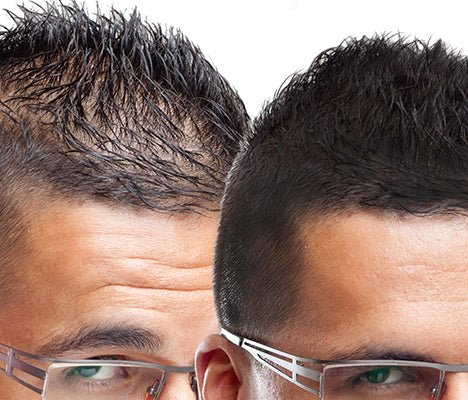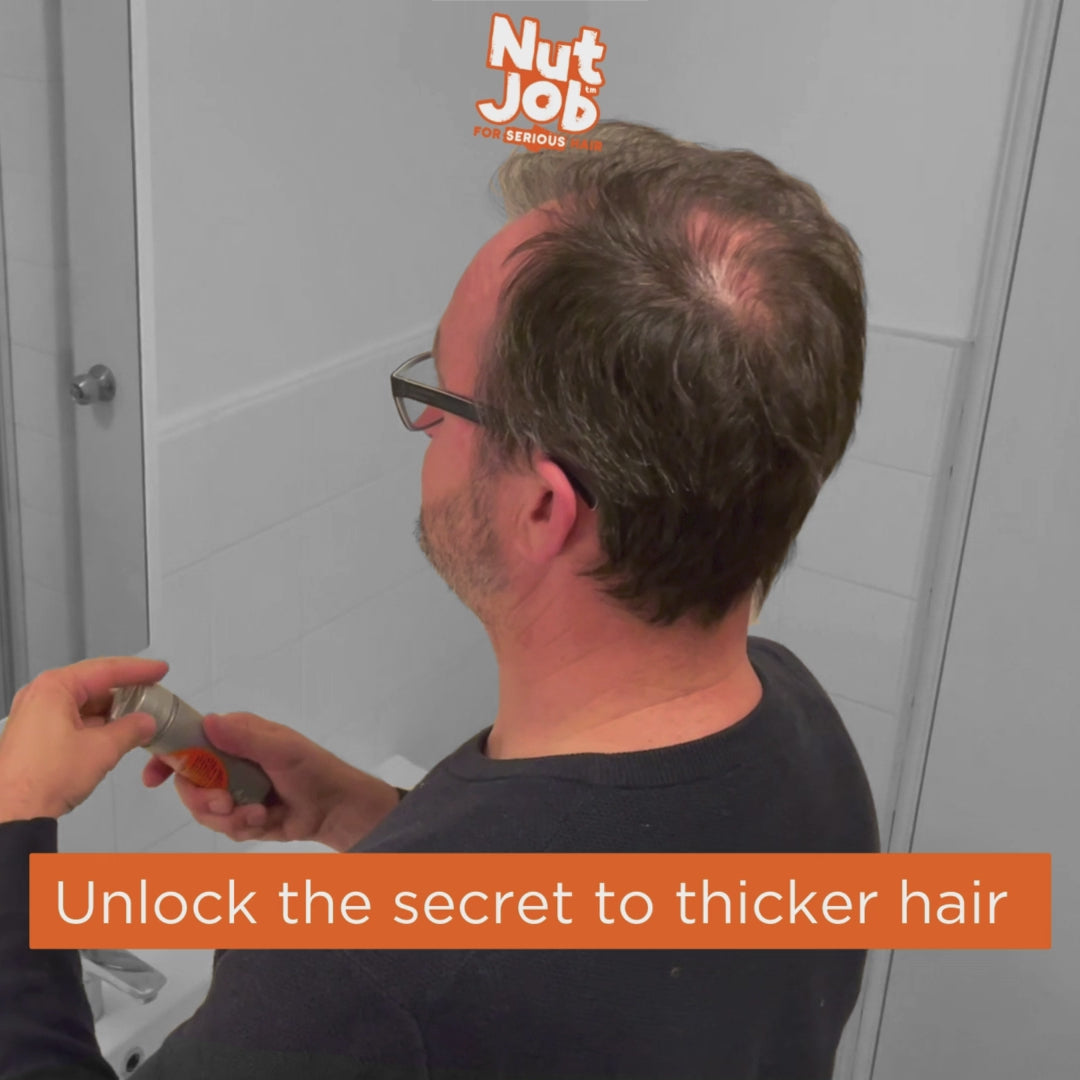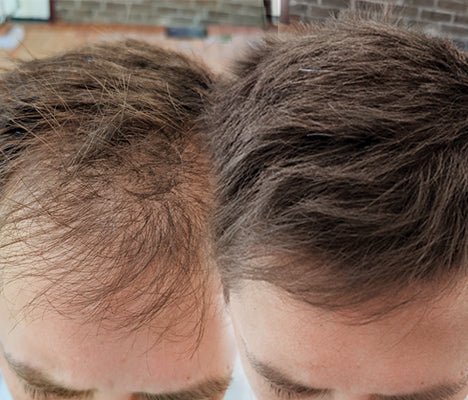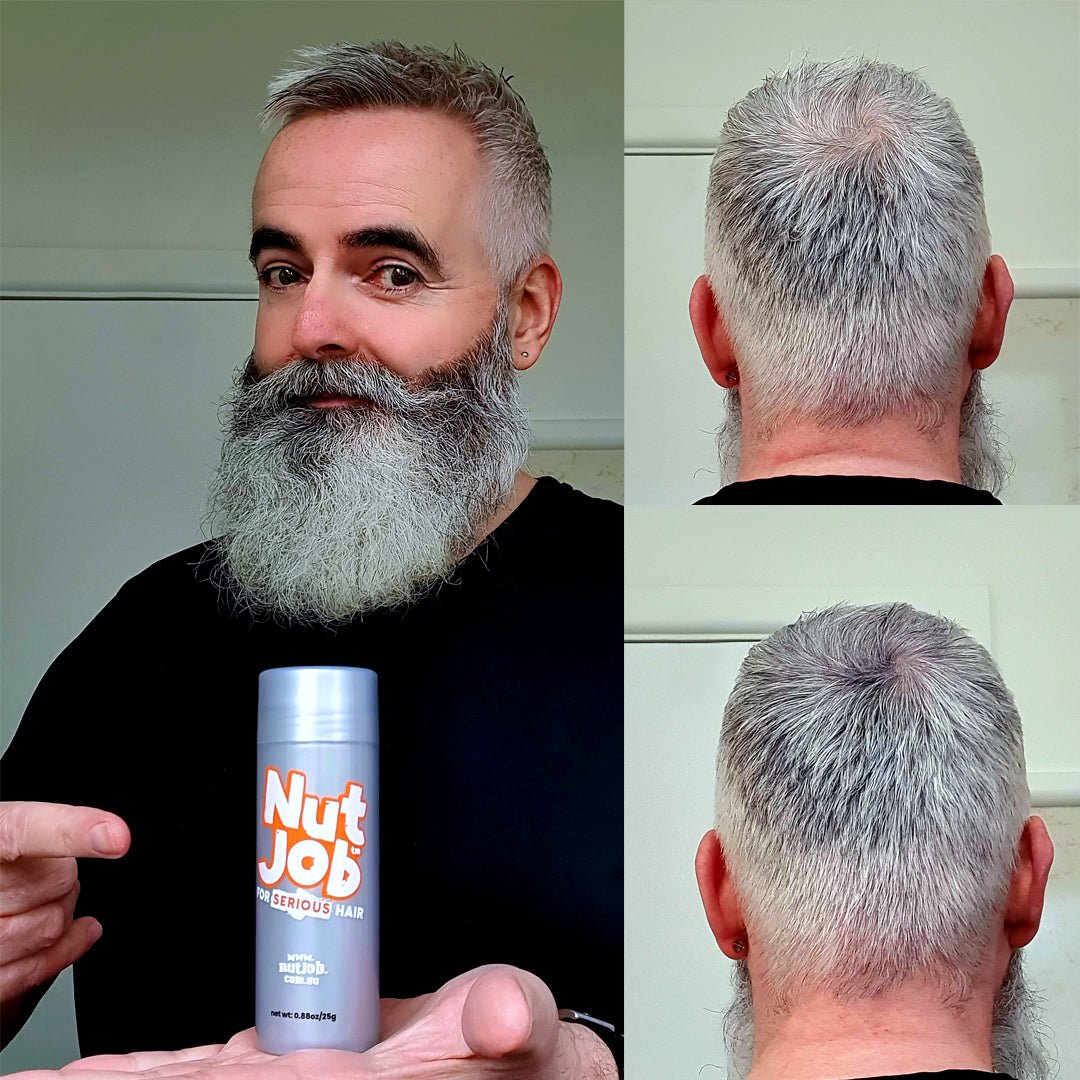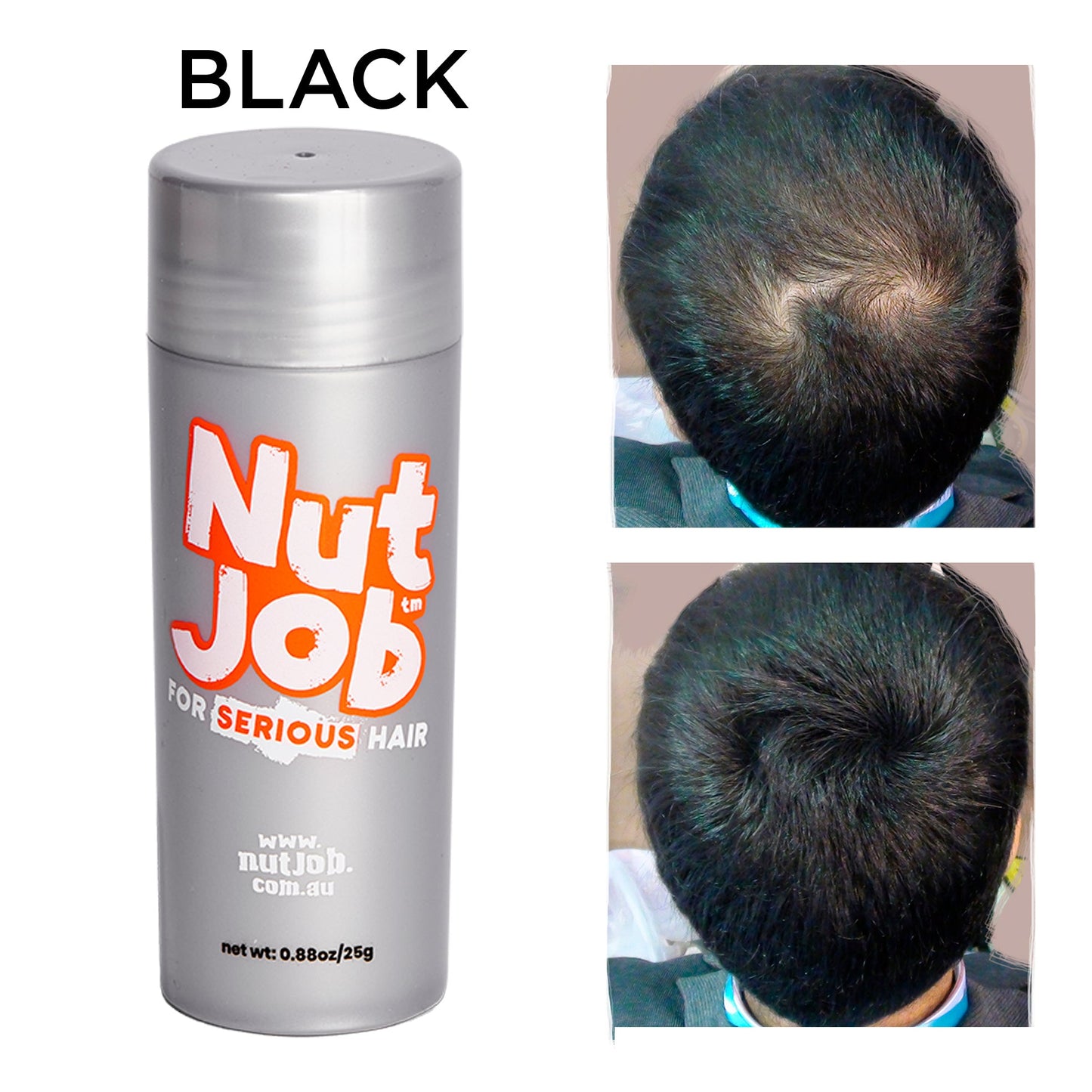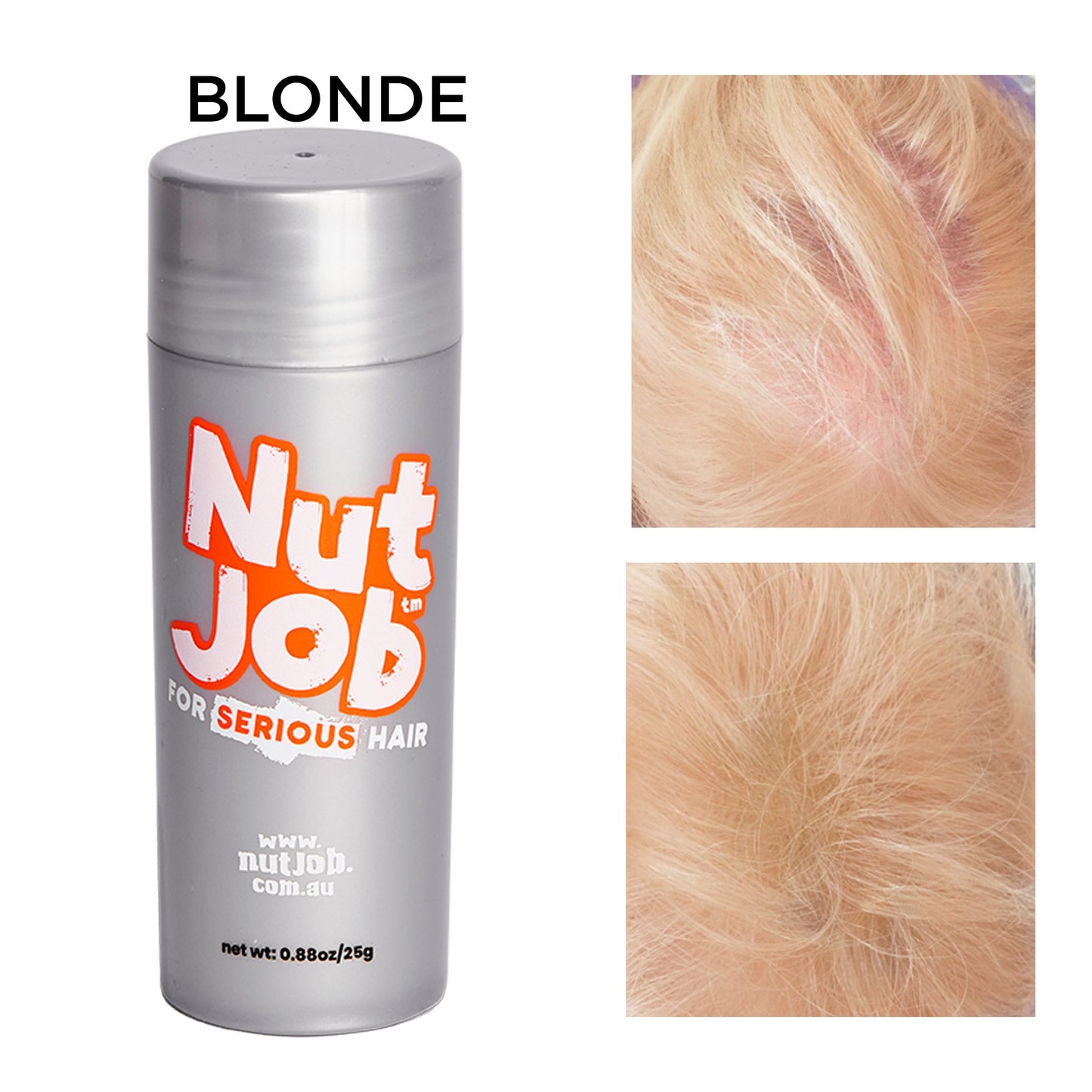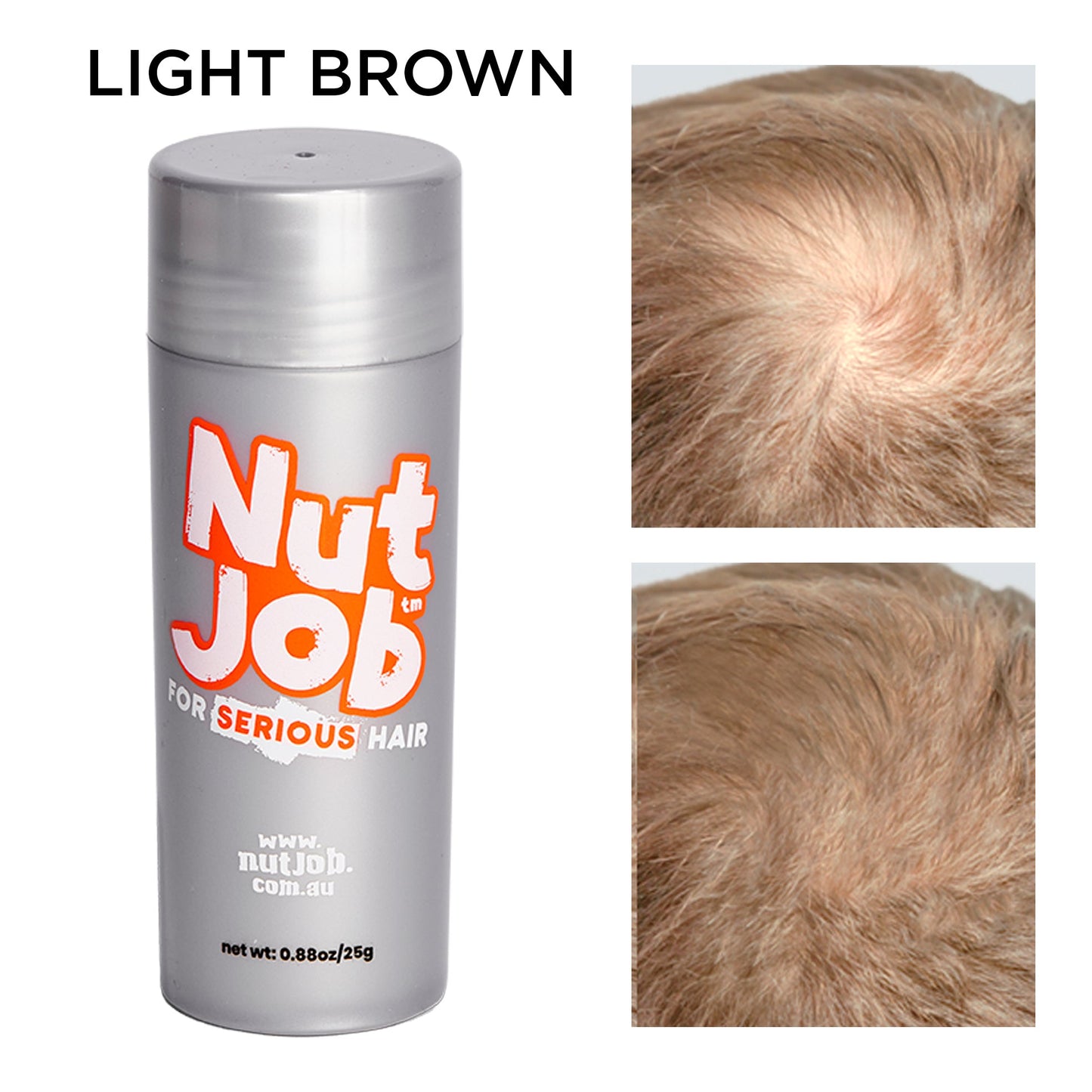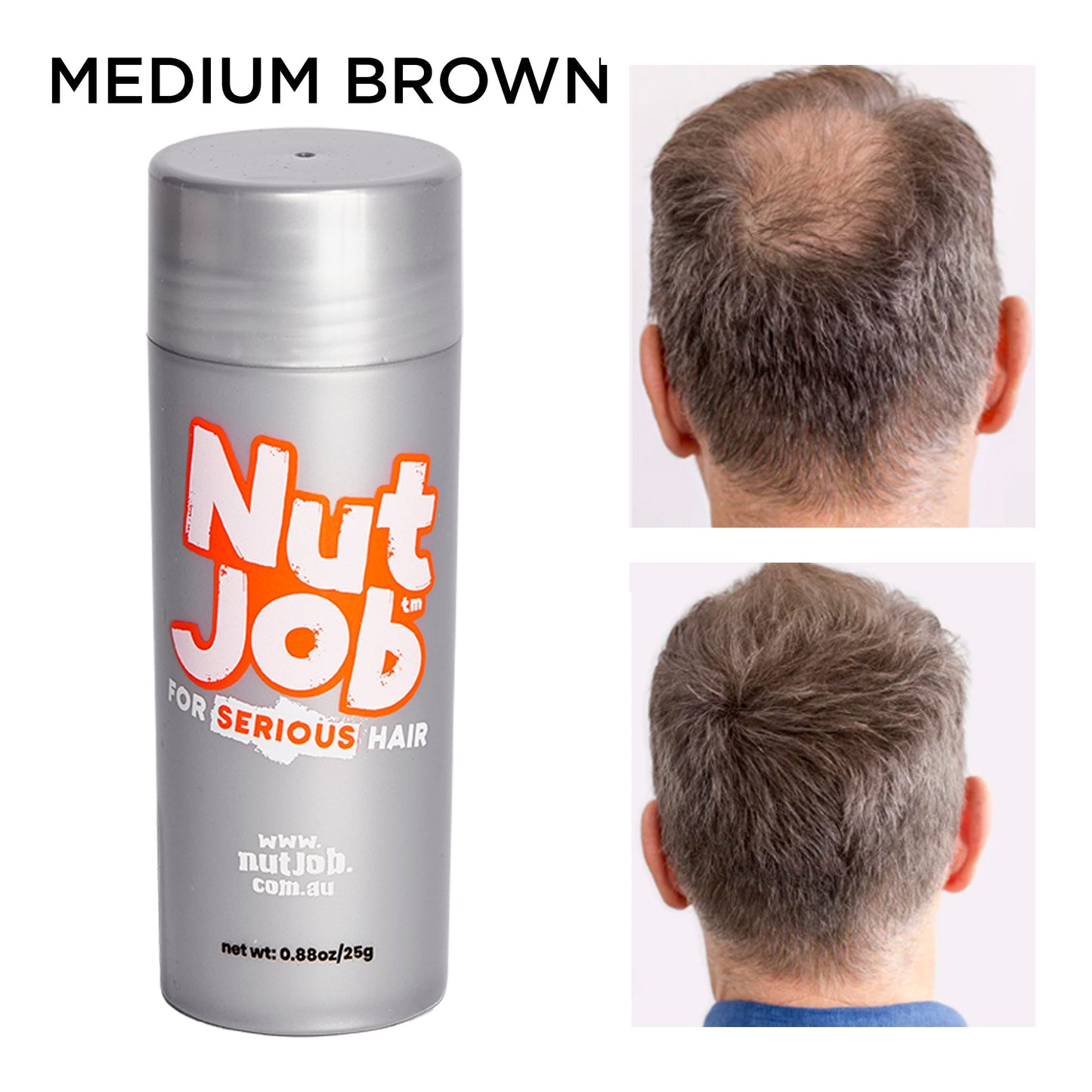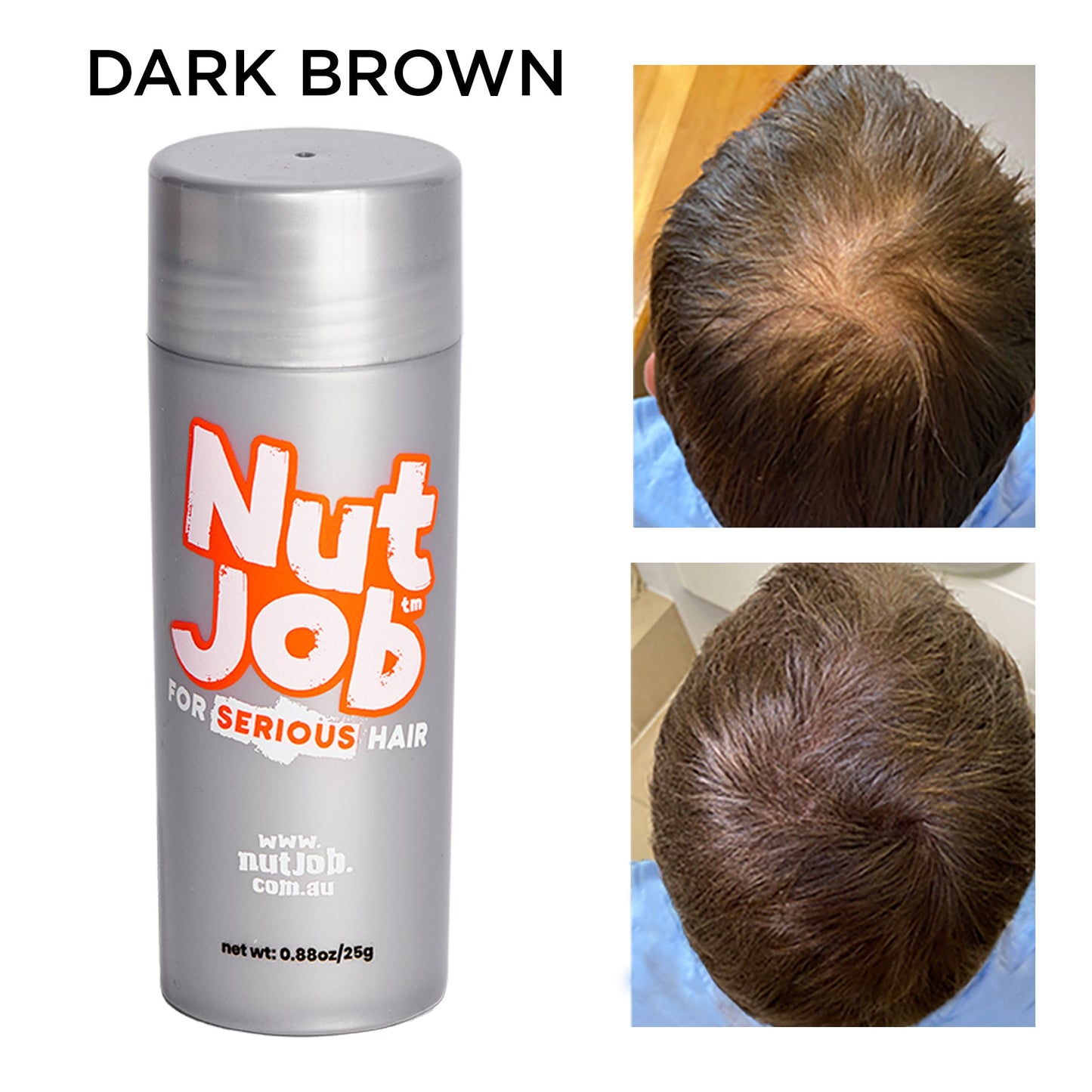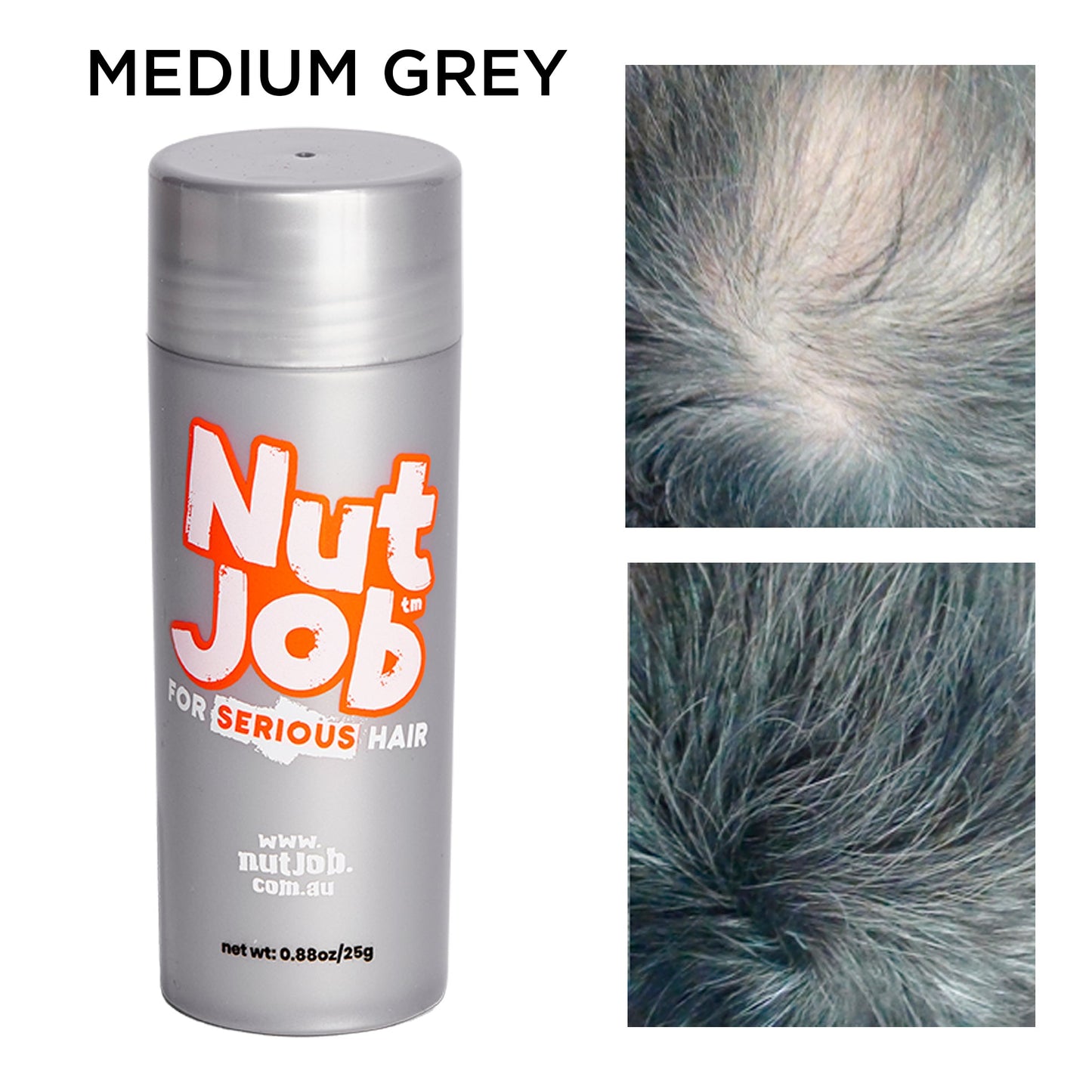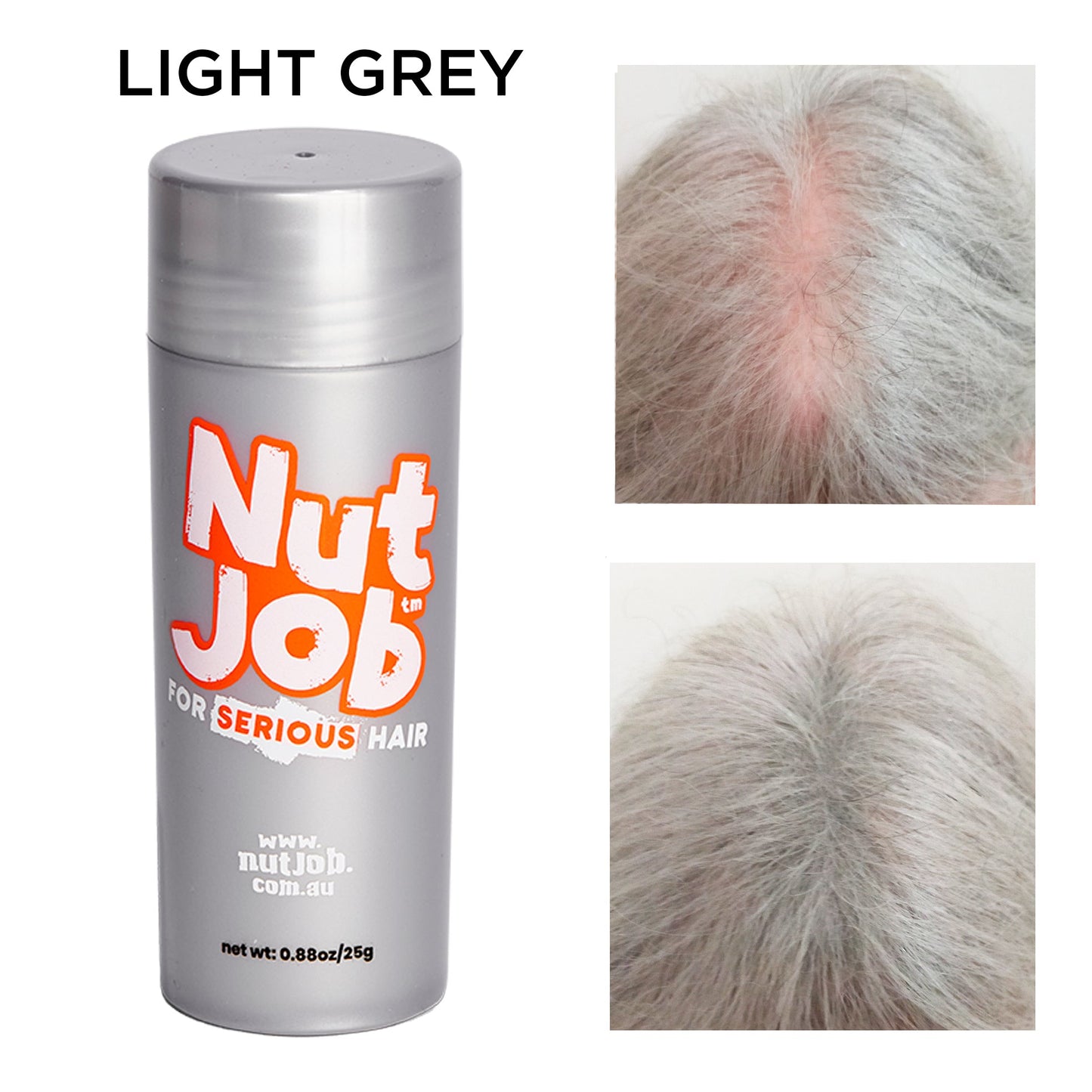
Hair Transplant Before and After vs Hair Fibres
Before you opt for the expense of a hair transplant, consider a faster cheaper option.
A desire for a full, thick head of hair is a pretty common aspiration for most guys. Something about having a lot on top just exudes effortless confidence and attractiveness. Nevertheless, hair loss stands in the way of this dream for many of us.
When it comes to options for either restoring hair or giving existing hair greater volume and density, choosing between an expensive hair transplant or affordable hair fibres can be a tough decision. Whilst hair transplants can certainly increase the amount of hair in a certain area, they are not without risk and their results not guaranteed. Hair fibres on the other hand are pretty low risk (if you choose a natural cotton fibre) and provide pretty consistent results, albeit, not permanent ones.

Before and after Nut Job Hair Thickening Fibres
In short, there are pros and cons to each avenue and it’s a good idea to be fully informed before dropping a bunch of cash to go under the knife! We’ve done all the research for you so if you’re considering whether a hair transplant is a good investment for your situation, read on…
If you’ve landed on this page, I’m sure you are already aware that hair transplants can be pretty expensive. Yes, you could go overseas for a cheap surgery, however, you open yourself up to all the risks involved with that choice and in the end, “cheap” is still going to be thousands of dollars!
If your budget is tight or you just don’t want to drop thousands on your hair, hair fibres are a great option. You can usually pick up around a month’s supply for $50-$80 which is pretty incredible for a full head of hair.
Hair transplants are a more of a marathon than a sprint. You’ll need to research providers and then have initial consultations to ensure you’re a good candidate. You’ll then go through surgical consultations and some prep before your surgery. Once you’ve had your surgery, you’ll have post-op consultations to ensure the transplant has ‘taken’ and then you begin the waiting game!

Once follicles have been transplanted, it takes around six months on average for your hair to look ‘normal’ - compare that to 60 seconds with hair fibres!
Your choice between hair transplants and hair fibres depends on your individual needs and preferences. Hair transplants, while effective for many, may not be suitable for everyone due to limited donor hair availability and the risk of significant loss. Additionally, achieving the desired density and natural look can be challenging, influenced by factors such as surgical skill, the quality of donor hair, and individual healing responses.
Hair transplants also come with potential risks, including infection, scarring, bleeding, and numbness, which should be carefully considered before proceeding. In contrast, hair fibres provide an immediate, non-invasive solution without the need for recovery time. Though they need to be reapplied after washing your hair, hair fibres can be safely used daily to effectively conceal thinning or balding areas without being restricted by donor hair availability, making them a versatile option for many individuals.

